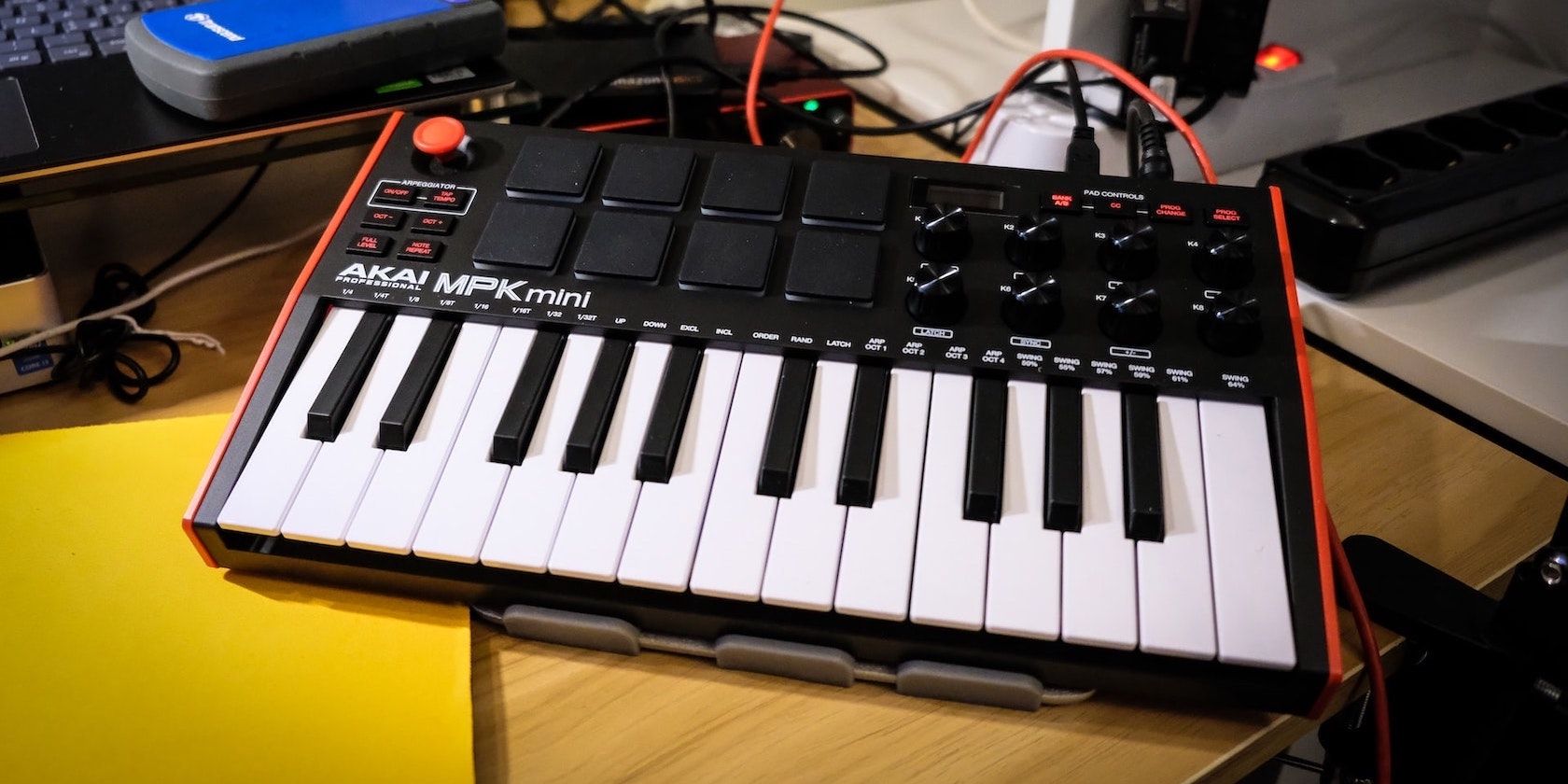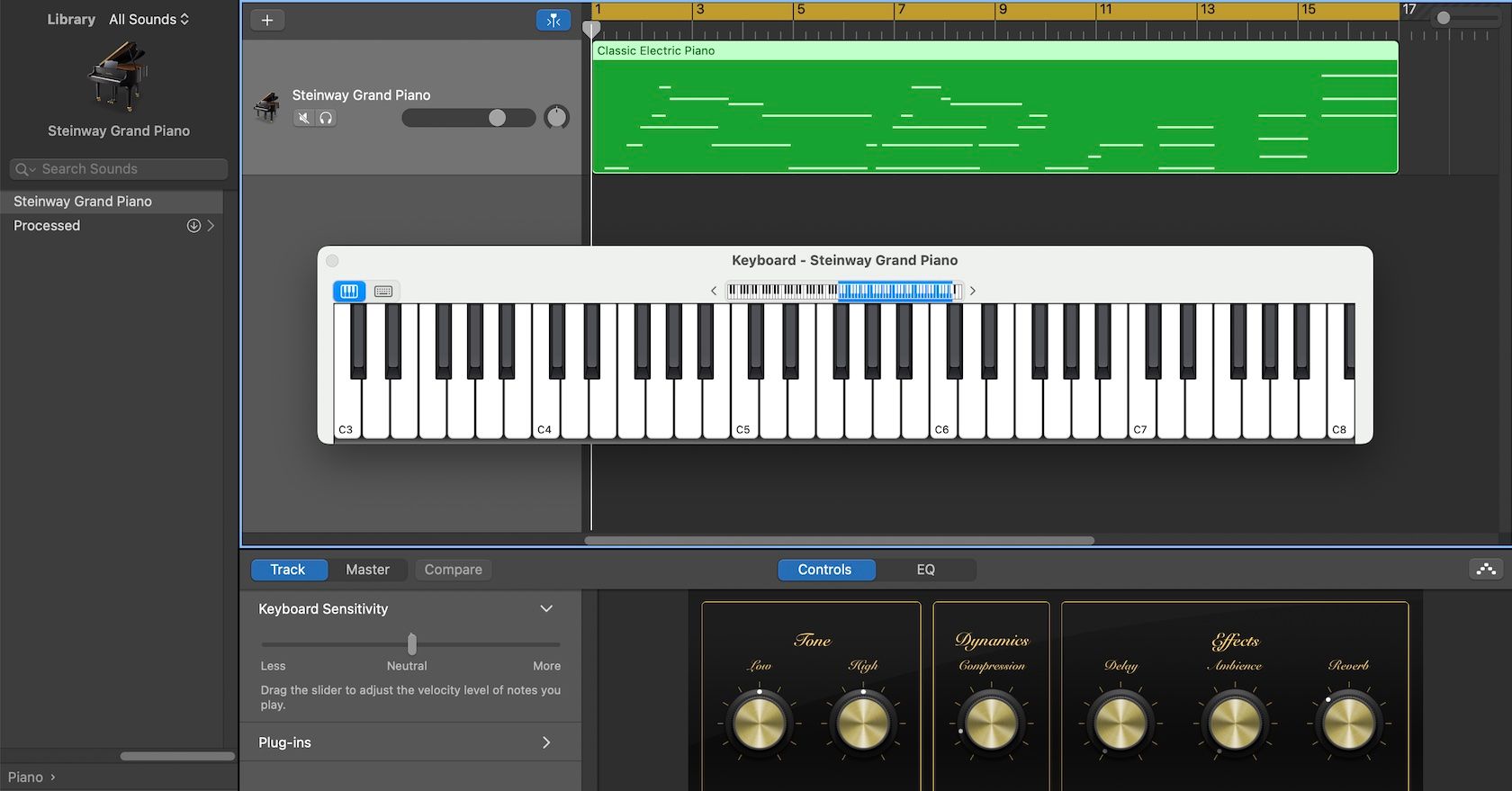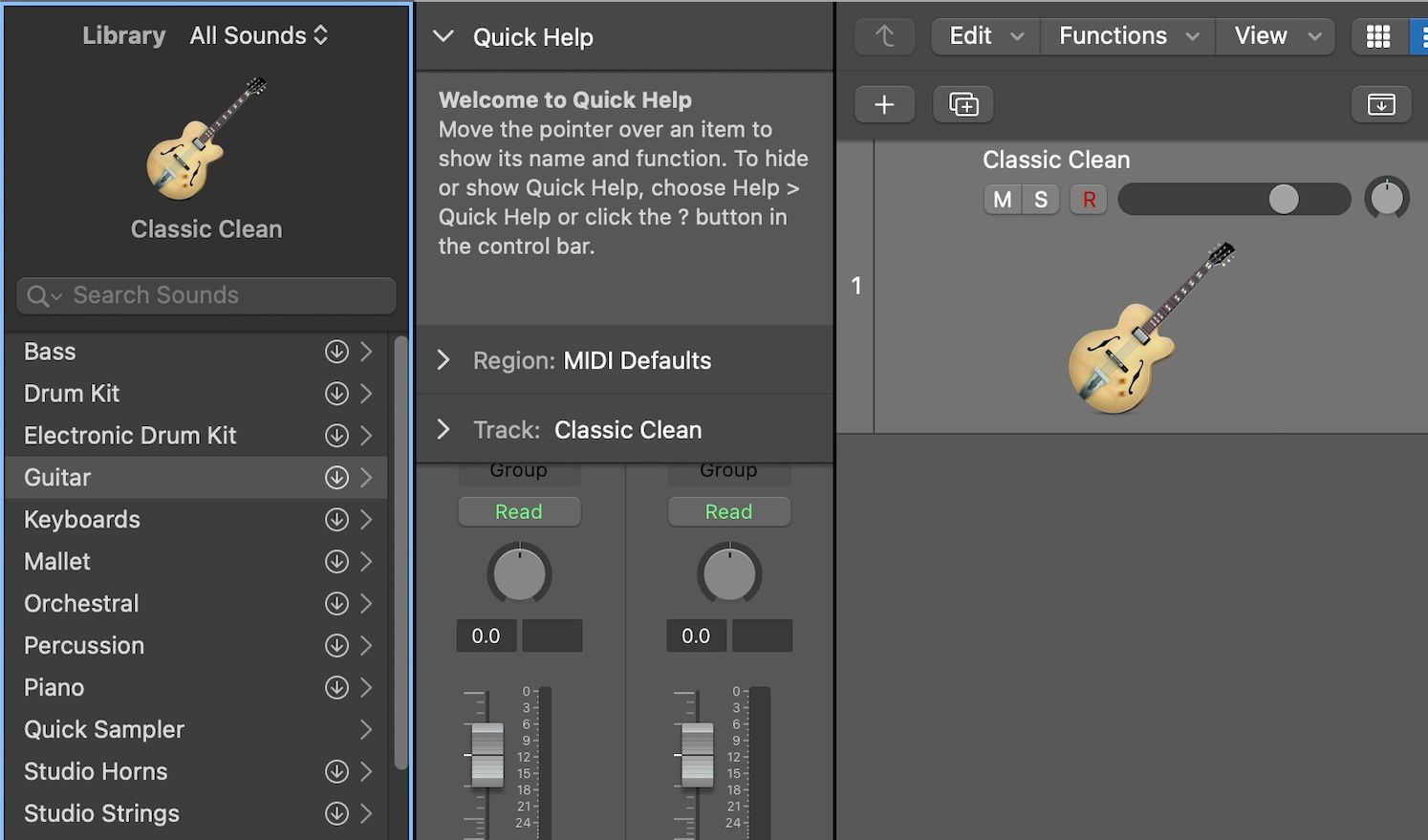Many music producers will recommend getting a MIDI keyboard to use with your DAW. It's one of the quickest ways to take a song and record it straight into your computer. But besides recording a melody, what else is a MIDI keyboard good for?
You can experiment with digital synthesizers and record effect plugins with ease, but that's just the tip of the iceberg. If you're new to music production, you might discover that the MIDI keyboard has plenty more to offer than you might think.
What Exactly Is a MIDI Keyboard?
MIDI stands for Musical Instrument Digital Interface, and it's a technical language that helps computers understand music input. A MIDI keyboard doesn't have speakers built into it, so on its own, it won't make any sound. Instead, it must be connected to a computer to create any kind of music.
The fun begins once it's hooked up to a DAW software of your choice, like FL Studio or Logic Pro X. After loading different sound samples or virtual instruments, you can use the MIDI keyboard to play and record them. You can do the same thing using your computer keyboard and mouse, but anyone will tell you that it's far quicker, easier, and more fluid to use a keyboard.
Underneath the hood, a MIDI keyboard is simply telling the computer when you started pressing a note, when you stopped, and how hard you pressed. Since these actions are translated to data, it makes it really simple to edit any note you played after recording it by shifting the notes around with a mouse. This is one advantage it has over recording with a microphone.
Here's how you can use your MIDI keyboard.
1. Classic Piano Sound
The obvious way to use your MIDI keyboard is to simply load up a piano instrument. A grand piano can cost tens of thousands of dollars to buy, not to mention huge space requirements, so it's safe to say a virtual piano is the next best thing.
You can find great virtual piano instruments in nearly every DAW. You can also buy virtual instrument sound libraries that are often indistinguishable from the real deal, all thanks to advanced sampling techniques.
In either case, using your MIDI keyboard to play a virtual piano has lots of benefits. It's perfect for sketching a song out or for experimenting with different chord progressions. Unlike audio recordings, you can also copy sections of MIDI music over to a separate track and see what it sounds like with a different instrument altogether.
As an added bonus, you can also use a MIDI keyboard, such as PopuPiano, to learn how to play piano.
2. Experiment With Digital Synthesizers
One of the most popular uses of a MIDI keyboard is to play digital synthesizers. It's how you can create truly weird and wonderful sounds like nothing you've heard before.
Unless you only listen to classical music, it's the synthesizer that reigns supreme in most modern popular music and films. Hans Zimmer is one famous composer who frequently used synth sounds. His music is in films like the Batman Dark Knight trilogy and Interstellar, both of which are great examples of how synths are used today.
The key to experimenting with digital synthesizers is the MIDI keyboard. Without it, you are forced to use your mouse pointer to create melodies and harmonies, one note at a time—not a very inspiring way to write music.
In fact, the Alchemy Synth is one of the core reasons you should consider upgrading from Garage Band to Logic Pro X, and it's a great place to start using your MIDI keyboard to its full potential.
3. Play Any Digital Instrument You Can Imagine
At this point, almost any real instrument has a digital version that you can play using a MIDI keyboard. Nowadays, they sound quite realistic, so if you wanted to replace your entire band with virtual instruments, you could do so with ease.
Lots of people love using Logic Pro X because it has a huge instrument library that comes with it by default. But there are also various websites to download free VST plugins and instruments that you can add to any DAW you own.
In reality, it's impossible to own so many physical instruments and be good enough to play them too, but with MIDI you don't have to.
4. Automate Audio Effects Plugins Without a Hitch
MIDI keyboards with knobs and faders allow you to automate effects plugins. It's a trick that professional producers use to add effects in an intuitive way and speed up the production process. Without a MIDI keyboard, you have to do it with your mouse, which as we've mentioned before, is far slower and much more tedious.
As an example, you can assign the volume of a track to a knob on your MIDI keyboard. Then, when you hit play and listen to your track, you can change the volume in real-time. In other words, you can "automate" any effect changes in real-time; including other parameters like delay, pan, gain, and dry/wet.
These days many MIDI keyboards and DAWs have an auto-detect feature, making assigning effects to your keyboard a breeze.
5. Make Beats With Your MIDI Keyboard
Alongside writing melodies and harmonies, a MIDI keyboard is great for creating beat tracks.
You can do this using the keyboard keys to play samples, or you can use pads. Pads are rubber squares that will either be above the keys or off to the side, and a MIDI keyboard can have eight or more depending on the model.
Similar to knobs and faders, you can assign sounds to the pads, so you can play them in real-time like a performance. Making music this way is far more fun and a lot better for producing music that flows. It also frees up space for you to use the keys to play harmonic material.
Many of the best MIDI keyboards come with pads nowadays, making it easier than ever to lay down some beats.
Make the Most of Your MIDI Keyboard
With the right MIDI keyboard, you can create great music that doesn't sound like it was made on a computer at all. Combine this with virtual instruments or synthesizers, and you can use your MIDI keyboard to play virtually any sound you can imagine.
Once you've got a hold of playing sound libraries, you can learn how to control effects plugins. On top of that, learning how to produce beats on your MIDI keyboard will take your music production skills to the next level.



